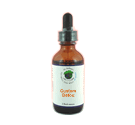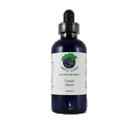 Arthropod/Vector
Bacteria
Chemicals
Fungus /Mold
/ Yeast Metals Parasites Virus Other Arthropod/Vector
Bacteria
Chemicals
Fungus /Mold
/ Yeast Metals Parasites Virus Other
|
Nicotine
Smoking cigarettes or inhaling second-hand smoke when someone smokes in your presence are primary ways you will get exposed to nicotine. Tobacco can be smoked in cigarettes, cigars, or pipes. It can be chewed or, if powdered, sniffed. It doesn't matter how glamorous you look doing it, nicotine is highly addictive and it is toxic. As nicotine enters the body, it is distributed quickly through the bloodstream and crosses the blood-brain barrier reaching the brain within 10–20 seconds after inhalation. The elimination half-life of nicotine in the body is around two hours. The amount of nicotine absorbed by the body from smoking depends on many factors, including the types of tobacco, whether the smoke is inhaled, and whether a filter is used. For chewing tobacco, dipping tobacco, snus and snuff, which are held in the mouth between the lip and gum, or taken in the nose, the amount released into the body tends to be much greater than smoked tobacco. Forty-eight million Americans smoke because of addiction to nicotine. If you must use a source of nicotine, consider a source of more pure tobacco (like pipe or cigar) because the most toxic part of a cigarette is in fact, not the nicotine, but the thousands of chemicals combined with the tobacco leaf. If you make the choice to continue the use of tobacco, consider organic sources so you are not smoking the many pesticides often sprayed on tobacco leaves. This remedy helps to antidote nicotine and assist the body in rebuilding the many enzymes and metabolites that become deficient when nicotine is used, ie, nicotine N'-oxide, nornicotine, nicotine isomethonium ion, 2-hydroxynicotine, nicotine glucuronide, Glucuronidation, etc. |
|




